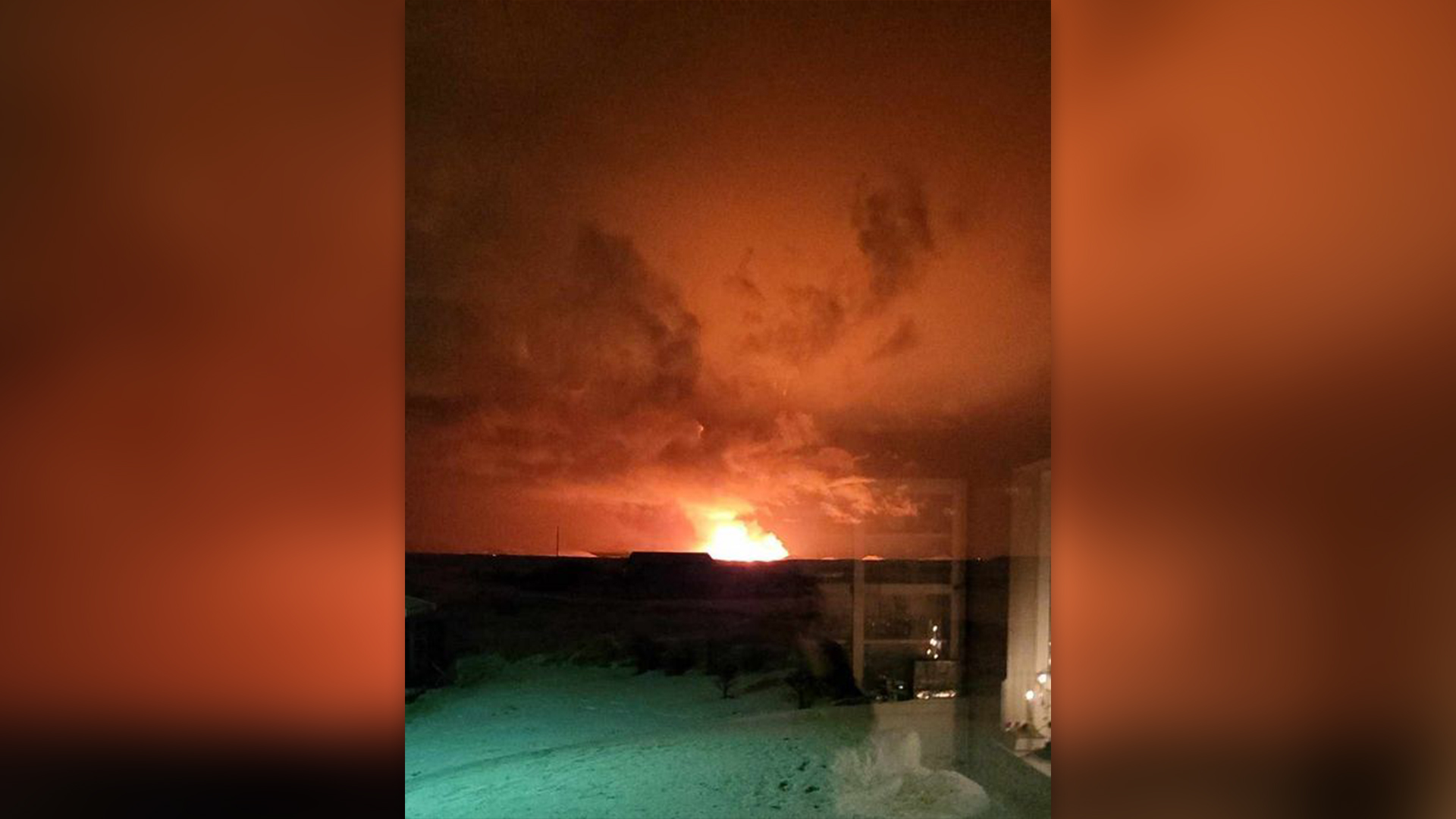
To keep up with the latest developments about the Iceland eruption, check out our live updates page.
A volcano in Iceland is now erupting after weeks of earthquakes rocking the region, according to a statement released by the Iceland Met Office (IMO) on Monday (Dec. 18).
The eruption is happening on the country's southwestern Reykjanes peninsula. About 4,000 people were evacuated from Grindavik, a fishing town village on the peninsula, and authorities also closed the town's Blue Lagoon geothermal spa, according to Reuters.
"An eruption has started north of Grindavík," according to the Met Office's statement. "It can be seen on webcams and seems to be located close to Hagafell, about 3 km [1.8 miles] north of Grindavík. The eruption began at 22.17 [5:17 p.m. EST Eastern Time] following the earthquake swarm that started around 21."
The IMO added that a coast guard helicopter would soon take off "to confirm the exact location and size of the eruption."
Hundreds of daily earthquakes began rattling the region in October, prompting scientists to think that an eruption was imminent. Grindavík was previously excavated on Nov. 10 due to fears of an eruption. More recently, between Dec. 12 and Dec. 15, 460 earthquakes hit the area; of these, 30 had a magnitude greater than 1.0, according to the IMO.
Related: The 12 biggest volcanic eruptions in recorded history
The much-anticipated eruption comes from an underground magma tunnel, or dike, that has swelled so much it has burst up through the ground. The enormous tunnel stretches for around 10 miles (16 kilometers) from near the port town of Grindavík to Sundhnúk.
The dike has been slowly filling with magma over the last few weeks, resulting in tens of thousands of earthquakes that have triggered significant ground deformation, including sinkholes and large road cracks.
Experts first became convinced that the dike would erupt on Nov. 10, and the residents of Grindavík were swiftly evacuated.
In the following days, officials began building temporary defenses to protect the nearby geothermal Svartsengi power plant, which provides power across the country, and the iconic Blue Lagoon tourist resort, which are located within the eruption's danger zone.
The eruption is part of a 1,000-year cycle of volcanic activity on Reykjanes peninsula and a sign that the area will likely see eruptions for centuries, Edward W. Marshall, a researcher at the University of Iceland's Nordic Volcanological Center, previously told Live Science in an email.







